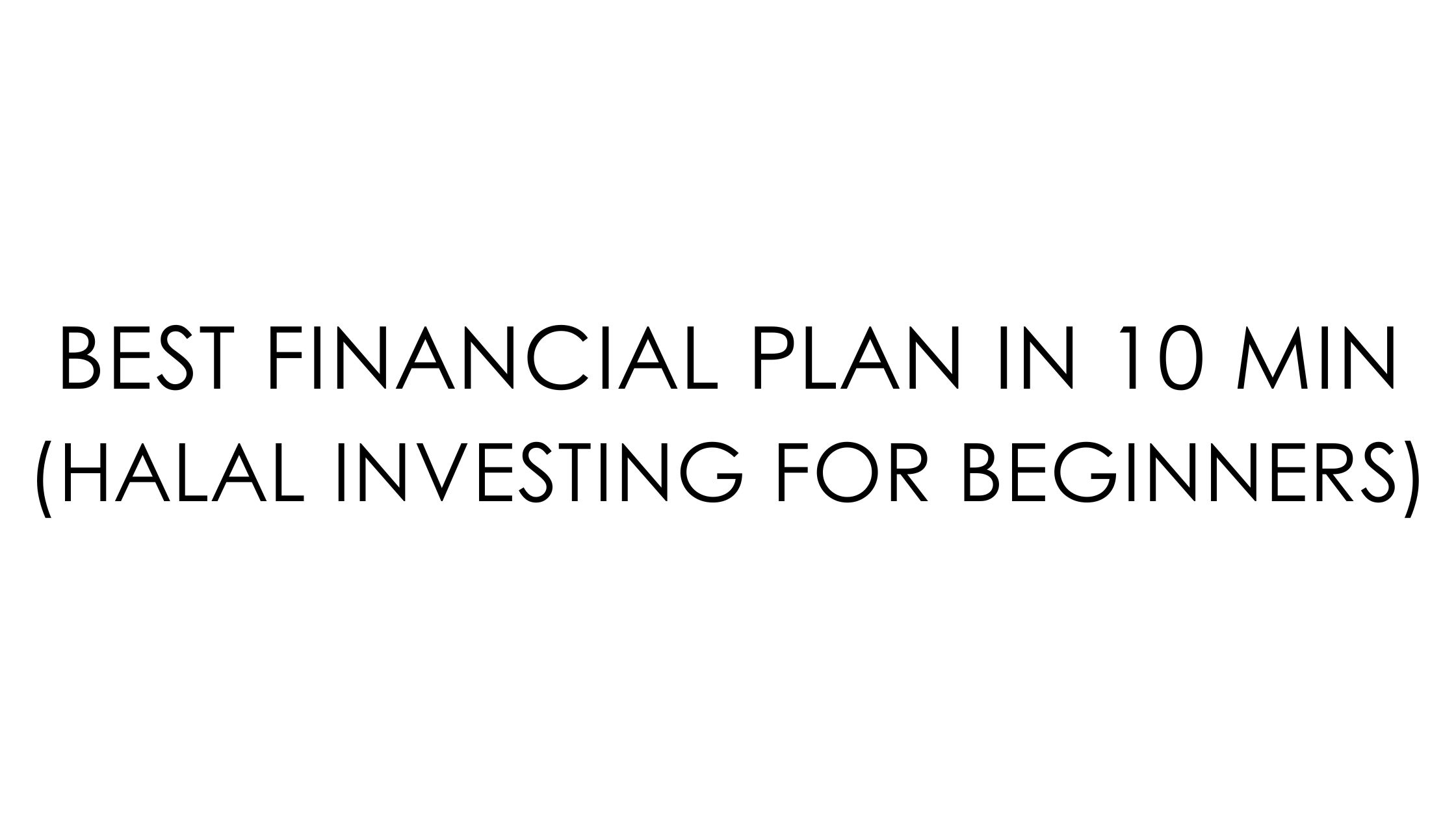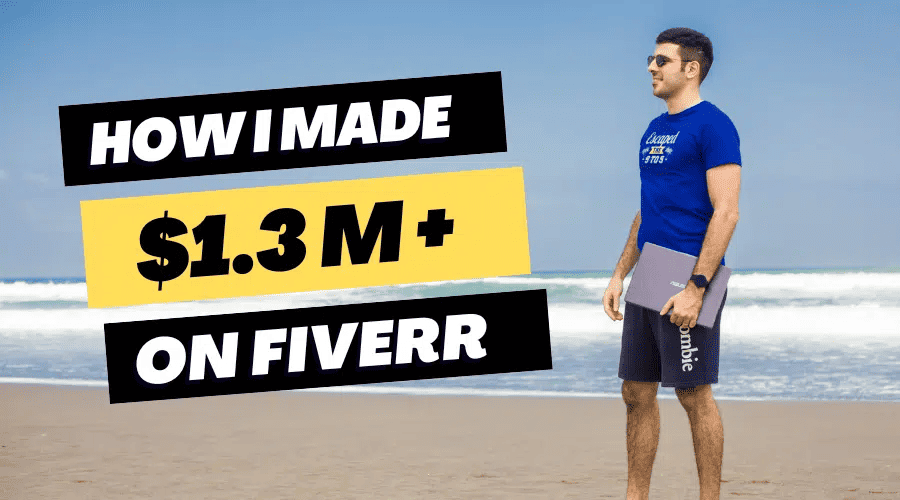Feeling overwhelmed by all the financial advice out there?
What if I told you that in just 10 minutes, you could create a solid, halal financial plan that aligns with your faith and sets you on the path to financial freedom?
Stick around; you don’t want to miss this.
In this post, I will guide you through creating the best halal financial plan in just 10 minutes.
By the end of this post, you’ll have a simple, step-by-step halal financial plan.
We’ll cover budgeting, saving, investing, and avoiding haram financial traps—all in a way that’s easy to follow.
So, grab a pen and paper and stick with me till the end!
Okay, step one.
Step 1: Map Your Current Finances
If you’ve ever wondered why your money disappears so quickly, the answer is simple: you’re not tracking it.
You can’t manage what you can’t measure, right?
So the goal here is to track every dollar, euro or dirham you spend and start dividing your expenses into three categories:
- Essentials : This covers your non-negotiables like rent, utilities, food, and transportation.
- Discretionary : Things like eating out, hobbies, shopping, and other extra expenses.
- Savings : This is the money you have left after subtracting all your expenses.
As a rule of thumb, essentials shouldn’t exceed 50% of your income, discretionary not more than 20%, and at least 30% of your income should be saved; of course, the more, the better.
For example, if you earn $2000 per month, $1000 will go in essentials, $400 in discretionary and $600 in savings.
Now, how do you track all this?
Use budgeting apps like YNAB or a simple Google Sheet that you can fill out at the end of each week or month.
If you’ve never done it before, tracking your expenses is like turning on a light in a dark room.
You’ll finally spot the money suckers in your life—those sneaky little expenses draining your wallet. I like to call them ‘money vampires.’
For example, you might realize you’re spending a fortune on takeout, paying for unused subscriptions, or buying clothes you don’t need.
These habits creep up on you and drain your wallet without you even noticing.
But let me be clear—I’m not one of those personal finance gurus who will tell you to live on ramen noodles and never spend a dime on anything fun.
The key is figuring out what brings you happiness and focusing your spending there. Be intentional and cut out the things that don’t add value to your life.
If traveling fills your soul, budget for it!
But if that daily Starbucks run doesn’t make a big difference to your happiness, why not try brewing your coffee at home and taking it with you? Simple swaps like that can make a significant impact.
And the numbers don’t lie. Canceling a $20/month subscription saves you $240 a year. Cooking at home instead of spending $300 a month on takeout? That’s $3,600 saved annually. These small changes add up to massive wins over time.
Later in this post we will see based on your financial goals if the money you are saving is enough.
The most important thing is to be aware—really aware—of where your money is going. Awareness is the first step toward taking control of your finances and building the life you want.
Let’s say you consistently save 30% or more of your income. Now what do you do with it?
This brings us to step 2
Step 2: Build an emergency fund
An emergency fund is like a safety net for your money.
It’s there to help you when life surprises you—like a medical bill, losing your job, or fixing your car.
If you don’t have savings for emergencies, you might end up borrowing money or using haram loans. And we want to avoid that!
So, how much should you save? It depends on your situation.
A good rule is to save 3 to 6 months of your basic expenses. For example, if you spend $2,000 a month on essentials, aim to save $6,000 to $12,000.
If you have kids or family who rely on you, it’s a good idea to save even more—maybe 1 or 2 years of expenses. It all depends on what makes you feel safe and secure.
Make sure this money is kept in a halal savings account.
Many Islamic banks offer accounts without interest, or you can use a halal cash fund. Just make sure it’s easy to access when you need it.
It might take time to build your emergency fund, but it’s one of the best ways to feel more in control and prepared for whatever life throws at you.
Now that you’ve got your emergency fund in place, what’s next?
Step 3: Define your financial goals and the timeframe for each goal.
What do you want to achieve? do you want to buy a house, start a business, retire early?
Whatever your goals may be, break them down into specific, achievable steps.
Let’s say your goal is to buy a house in the next 3 years.
Start by calculating how much you’ll need for the down payment.
For example, if the house you want costs 400k, and you need a 20% down payment for an Islamic loan, that’s 80k saved up.
Now, if your goal is early retirement, let’s say you want to retire comfortably at 45.
To do this, you need to define how much money you’ll need to sustain yourself.
Here’s an example: let’s say you want to live off 50,000 a year.
The 4% rule is a popular guideline in retirement planning. It suggests that if you withdraw 4% of your savings annually (adjusted for inflation), you can sustain your funds for at least 30 years.
So, how much would you need saved up to make this possible? Take your annual withdrawal amount—50,000—and multiply it by 25.
This gives you a rough idea of the amount you need in investments to retire comfortably. In this case, you’d need 1.25 million.
So, now that you’re clear on your financial goals and their timeframes, what’s next?
Step 4: Organize your finances and analyze the feasibility of your plan
Let’s take your first goal: saving $80,000 in 3 years to buy a home with an Islamic mortgage.
If you currently have a monthly surplus of $2,500, here’s how to check if your goal is realistic.
To save $80,000 in 3 years, you’ll need to save $80,000 ÷ 36 months = $2,222 per month.
Since you’re already saving $2,500 monthly, you can comfortably allocate $2,222 toward your down payment goal. That leaves you with $278 per month for other expenses, savings, or lifestyle goals.
You’ll also need to research Islamic mortgage options, like Murabaha or Ijara, and understand how factors like your income, savings, and financial standing impact your borrowing capacity. Knowing these details will help you plan better and qualify for the mortgage you need.
Now, let’s talk about your long-term goal: retiring early.
If you’re 30 and want to retire by age 45, and you’ll need $50,000 per year in retirement, the 4% rule suggests you’ll need a portfolio worth $1.25 million.
To reach $1.25 million in 15 years, assuming an 8% annual return from Sharia-compliant investments, you’ll need to invest $4,300 monthly.
If this amount seems daunting, explore halal investment options like real estate, gold, sukuks, or Sharia-compliant ETFs and stocks. These options can help grow your wealth over time in a way that aligns with your values.
Here’s the reality: You won’t be able to work on all your goals at once. Prioritization is key.
In my case, when I was employed, my financial goals were to:
- Build a solid emergency fund to leave my job and start a business.
- Save for a home.
- Work toward financial freedom.
My priority was clear: I focused on the emergency fund first because I needed that cushion to take the leap into entrepreneurship.
Once my business stabilized, I shifted my focus to saving for a house. When I got the house, I directed all my energy toward achieving financial freedom through saving and investing.
This brings us to the next step.
Step 5: Refine Your Plan
After analyzing your plan, you might realize that, at your current pace, you’ll struggle to meet your goals. This is where you need to adapt.
You have three options, and you can use a combination of them depending on your situation:
- Increase your income. Start a side hustle, change jobs, grow your business, or upskill to boost your earning potential.
- Cut expenses aggressively. Identify and eliminate unnecessary costs. Simplify your lifestyle to save faster. You can get really creative here, for example you can consider getting a roommate, downsizing your home, or even finding a remote job and moving to a more affordable country with lower living costs and taxes.
- Adjust your goals. You can lower your target amount, extend the timeframe, or a mix of both to make it more achievable.
When I was employed and saving aggressively, I rented a tiny studio on the outskirts of Paris. It was small and on the ground floor, but I was willing to make that sacrifice to grow my emergency fund as quickly as possible.
Later, when I started my business and wanted to save for a home, I moved to a more affordable country with lower taxes. This allowed me to save even faster while scaling my income.
After readjusting your plan, remember that achieving your financial goals is a journey that requires commitment and flexibility.
Your ability to adapt to life’s changes and stay disciplined will determine how quickly you reach your targets.
Whether it’s increasing your income, cutting back expenses, or adjusting your timeline, every step you take gets you closer to financial freedom.
And don’t forget, even small sacrifices today can lead to massive rewards tomorrow.
Take control of your finances, align them with your values, and trust the process.
And leave a comment below: What’s your biggest financial goal for this year?




